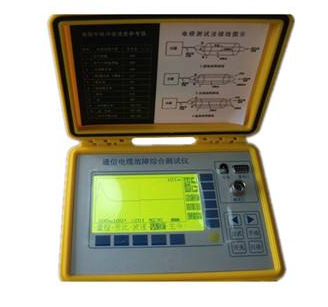Cable fault tester works
Working Principle of Power Cable Fault Tester The power cable fault tester consists of three main parts: power cable fault tester host, cable fault locator and cable path meter. The cable fault tester host is used to measure the nature of the cable fault, the full length and the approximate location of the cable fault point from the test end. The cable fault location meter determines the exact location of the cable fault point based on the approximate location of the cable fault tester host to determine the cable fault point. For buried cables with unknown directions, a path meter is used to determine the underground direction of the cable. The basic method for testing power cable faults is to generate a breakdown at the fault point of the cable by applying a high-voltage pulse to the faulty power cable. At the same time as the cable breakdown breakdown point, electromagnetic waves are generated and sound is simultaneously generated.

The working principle of arc reflection method (secondary pulse method) in cable fault location: Firstly, a high voltage pulse with a certain voltage level and a certain energy is applied to the fault cable at the test end of the cable, so that the high resistance fault point of the cable is hit. Wear arcing. At the same time, a low-voltage pulse for measurement is added to the test end, and when the measurement pulse reaches the high-resistance fault point of the cable, an arc is encountered and a reflection occurs on the surface of the arc. Due to the arcing, the high-resistance fault becomes an instantaneous short-circuit fault, and the low-voltage measurement pulse will undergo a significant impedance characteristic change, so that the waveform of the flashover measurement becomes a low-voltage pulse short-circuit waveform, making the waveform discrimination particularly simple and clear. This is what we call the "secondary pulse method." The received low-voltage pulse reflection waveform is equivalent to a waveform in which the core is completely short-circuited to ground. When the high voltage pulse is released and the low voltage pulse waveform obtained when the high voltage pulse is not released is superimposed, the two waveforms have a divergence point, which is the reflection waveform point of the fault point. This approach combines low-voltage pulsed and high-voltage flashover techniques to make it easier for testers to determine the location of the fault. Compared with the traditional test method, the advanced principle of the secondary pulse method is to simplify the complex waveform in the impact high-voltage flashover method to the simplest low-voltage pulse short-circuit fault waveform, so the interpretation is extremely simple, and the fault distance can be accurately calibrated.
The three-pulse method uses a double-impact method to extend the arcing time and stabilize the arc, and can easily locate high-impedance faults and flashover faults. The three-pulse method is advanced in technology, simple in operation, clear in waveform, fast and accurate in positioning, and has become the mainstream positioning method for high-resistance faults and flashover faults. The three-pulse method is an upgrade of the second-pulse method by first measuring the reflected waveform of the low-voltage pulse without breaking through the fault point of the cable under test, and then using the high-voltage pulse to break the fault point of the cable to generate an arc. When the arc voltage drops to a certain value, the medium voltage pulse is triggered to stabilize and extend the arc time, and then the low voltage pulse is sent to obtain the reflection waveform of the fault point. After the two waveforms are superimposed, the divergence point is also the position corresponding to the fault point. Since the medium voltage pulse is used to stabilize and extend the arc time, it is easier to obtain the fault point waveform than the second pulse method. Compared with the secondary pulse method, since the three-pulse method does not select the synchronization duration of the arc, the operation is also simple.
Online Ups,High Frequency Ups,Pfc Technology,Tower Cabinets
Shenzhen Unitronic Power System Co., Ltd , https://www.unitronicpower.com